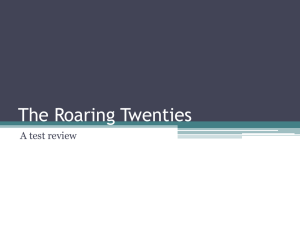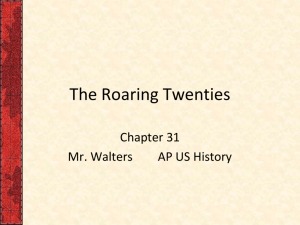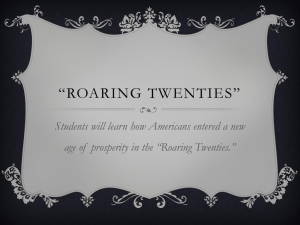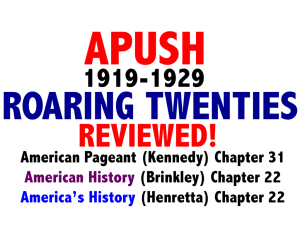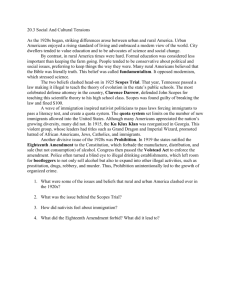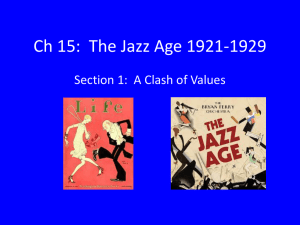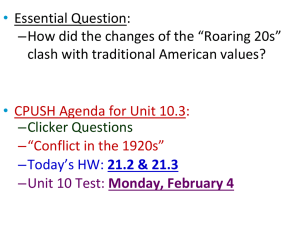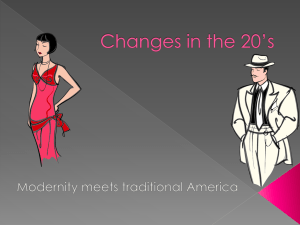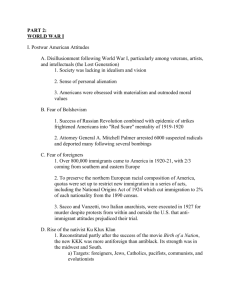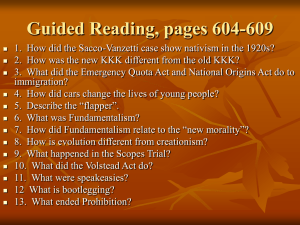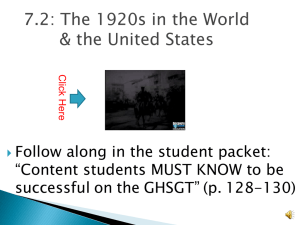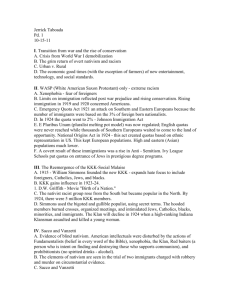Rural Response to the New Urban Culture of the 1920s
advertisement
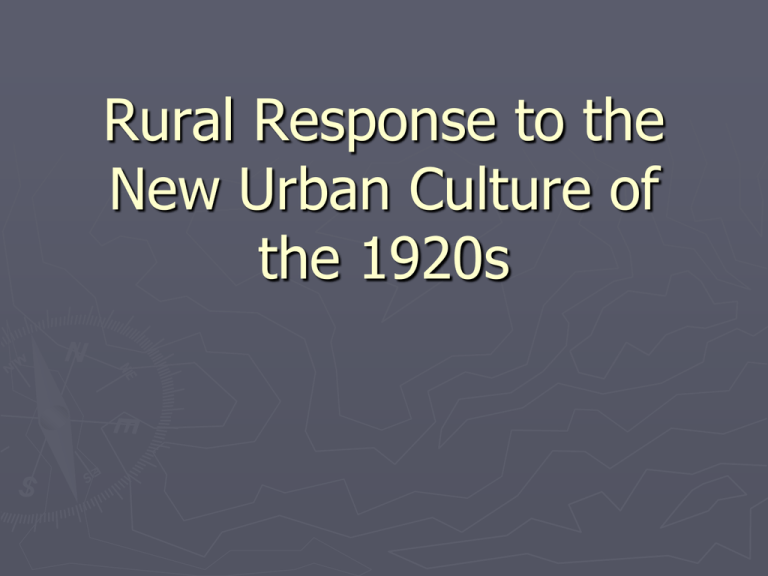
Rural Response to the New Urban Culture of the 1920s Cultural Conflict ► 1. With Farmers going to cities, Blacks leaving the South, and immigrants coming to America, more people begin to live in cities than in the country by the 1920s. ► 2. Cultural changes—hedonism, flappers, etc. ► 1 & 2 cause a backlash from rural (small-town) white Protestants who prefer conservative “traditional” values. ► They feel anxiety (their way of life/values are under attack). ► North East vs. The South & West. The Rise of the “New” KKK ► A 2nd version of the KKK emerges. ► New version is not just in South and aimed at keeping blacks down. ► “New” KKK seeks to preserve traditional White Protestant Values. ► Besides blacks, now against Catholics, Jews, immigrants, modernism, and people deemed immoral. ► Spreads outside the South to all states. ► Elects politicians. Prohibition ► Progressive were for it because of the negative effects on families. ► Many rural Americans for it because they associate drinking with immigrants (Irish and German), the rich & city people. ► 18th Amendment (1919) ► Volstead Act (1920)—Calls for enforcement of prohibition. Impact of Prohibition ► Impossible to enforce--People still wanted to drink. ► Bootleggers—people who made sold and/or transported illegal liquor. ► Speakeasies—Clubs where liquor was sold. ► Some illegal alcohol is harmful. ► Rise of organized crime. Gangs ► Gangsters existed before prohibition, but selling illegal booze is what made them rich and powerful. ► Violence—gang wars. ► Also involved in drugs and prostitution. ► Most famous is “Scarface” Al Capone of Chicago. Restrictions on Immigration ► New Immigration Law is passed in 1921. ► Aimed at keeping out “New “ immigrants from Eastern and Southern Europe. ► Quota system based on 3% of those already in US. ► 1924 National Origins Act—Reduced the number of immigrants again and excluded Asians altogether. ► By the end of the decade, there were fewer immigrants coming to the US then ever before. Rural Religion ► Fundamentalism—belief in the literal truth of the Bible was popular in small town America. ► They felt that their beliefs were under attack by the new urban culture. ► They denounce Darwin’s Theory and Modernism ► Modern evangelists begin using show business techniques & radio to reach large audiences. ► Aimee Semple McPherson raised over $1.5 million in just 2-years. The Scopes Trial ► 1925—Tennessee state law prohibits teaching anything other than creationism (i.e.- no evolution). ► ACLU (American Civil Liberties Union—an organization created to defend people’s constitutional rights in response to the red scare) gets John Scopes to challenge law by teaching evolution. ► Sets up a court showdown. ► Clarence Darrow, one of the most famous lawyers of the time, is the lawyer for Scopes. ► Former Populist William Jennings Bryan testifies for the prosecution as an expert on the Bible. ► Trial is broadcast on Radio. ► Trial shows the cultural tension that existed in the 1920s between modernism and traditional values. Clarence Darrow & William Jennings Bryan Review ► What were the author’s of the 20’s known a and what were the characteristics of their work? ► What accounted for the cultural tension that existed in the 1920s? Who didn’t like the modern culture that was emerging and why? How was this tension reflected geographically? ► What accounted for the rise of the “new” KKK and how were they different than the “old” KKK? ► What was the impact of prohibition on America? ► What was the Scopes Trial and how was it emblematic of the cultural tension that existed in the 1920s? Aimee Semple McPherson
